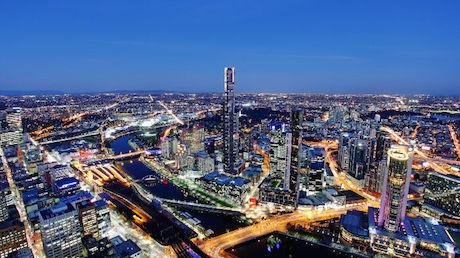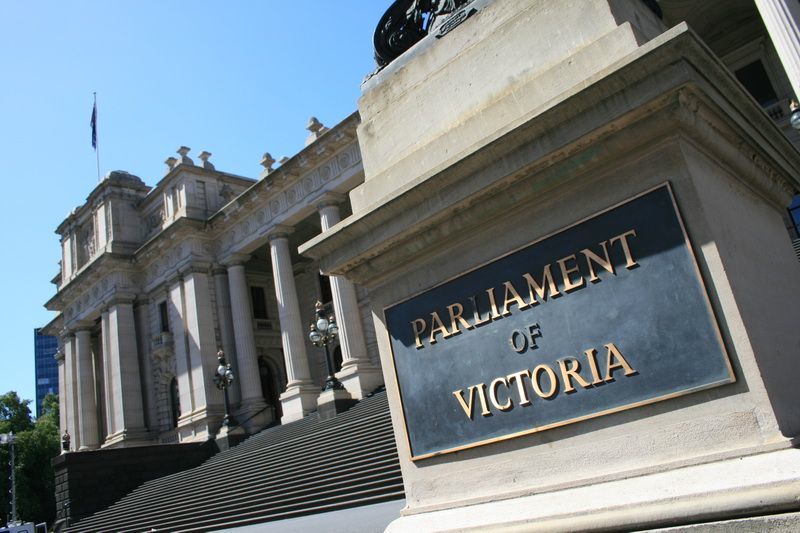INTRODUCTION
With less than two months to polling day, the Victorian state election looks like it will again go down to the wire.
For the past two years opinion polls may have consistently shown the Daniel Andrews-led Labor Opposition ahead of the Premiers Ted Baillieu and then Denis Napthine-led Coalition Government. But close observers of Victorian politics will remember the polls showed Labor with an almost identical lead going into the 2010 poll – an election Labor lost.
All sides agree the vote remains “soft” and could start trending in any direction once voters “switch on” during the formal four-week campaign leading to 29 November. While most pundits suggest this election is either Labor or the government's to lose, this could be that rare electoral contest where it is there for either side to win.
Victorian political history carries plenty of portents for both sides.
Even the closest followers of prevailing political fortunes would have failed to predict back in 2010 where Victorian politics would find itself in 2014.
The electoral record would suggest that the first term Coalition government is unlikely to lose. There has not been a one-term government in Victoria since the great Labor split of 1955, when a rift between anti-communist Catholic conservatives and the mainstream of the ALP led to the defeat of the government led by John Cain senior.
But history also suggests that governments that switch leaders midway through a term – as the Coalition has done with the switch from Premier Baillieu to Napthine - tend to run into trouble at the next election. Premiers John Brumby, Joan Kirner and Lindsay Thompson all went on to lose the next election after taking over from a popularly elected state leader. The last successful switch was in 1972, when Dick Hamer went on to win the 1973 election after replacing Henry Bolte.
The November state election is also the first time since 1982 that both of the major party leaders are contesting the election as leader for the first time. In potentially another positive sign for Labor, the 1982 election result saw the new Liberal Premier Thomson defeated by the new Labor opposition leader John Cain junior.
But even the closest followers of prevailing political fortunes would have failed to predict back in 2010 where Victorian politics would find itself in 2014.
Back then the consensus was that Labor had virtually no hope of regaining power within just one term. Most pundits were predicting a Baillieu-led Coalition was likely to hold the seats it won in metro Melbourne in 2010 while extending its majority by picking up new seats in regional Victoria that had stuck with Labor.
But the past four years have been fraught for the Coalition Government. A slowdown in the state economy coupled with a continued surge in population growth has made it a difficult time to be in government. A super-charged period in federal politics has also made it hard for the state government to get its message out to voters. The government has seen its position further eroded by a sense that is most palpable in the business community that Victoria has been allowed to drift in recent years, particularly during the first half of the term. To these woes the government can add the scandals and distractions involving colourful characters like political adviser Tristan Weston and maverick MP Geoff Shaw. The impact of these shenanigans are compounded by the hung parliament.
The shock resignation of Ted Baillieu in 2013 and the party room election of Denis Napthine as Premier did give the Coalition a morale boost. But by moving onto its second leader, the Coalition created a sense that the government has been in power for longer than it actually has.
For its part the Labor Opposition has remained remarkably well disciplined for a first term opposition – in so doing it has kept the public’s critical gaze mostly on the government. But Labor is not without its own challenges. The unpleasant episode involving an Age journalist's lost dictaphone – “Tape Gate” – still has the potential to be an election issue depending on the outcome of a police investigation. And the Coalition will run the mother of all scare campaigns about the risk posed by Dan Andrews alleged connection with militant unions, and his plan to “tear up the contract” with the private company awarded the tender to build East Link.
Given the state government's role as the service delivery end of public administration in Australia, much of the campaign to be fought at the micro level – street by street, suburb by suburb, school by school, hospital by hospital and so on.
It would also not be a Victorian state election without pipe dream and populist promises – so far we have been offered free transport in the city, endless variations of “tough on crime”, new regulations for puppy farms, new public holidays, medical marijuana and the redevelopment of Federation Square East rail yard.
Beyond these headline grabbers and one day wonders, outlined below are some of the the key policy debates that are likely to play out during the election.
THE ISSUES
Jobs, Jobs, Jobs: The Victorian economy is at a crossroads. The closure of high profile manufacturers like Ford, Holden, Toyota and Alcoa in 2017 or sooner will trigger tens of thousands of job losses and see billions of dollars in industrial equipment and infrastructure fall idle.
Victoria has the highest unemployment rate on the mainland with the latest Bureau of Statistics data putting the state's jobless rate at 6.8 per cent compared with 6.1 per cent for Australia as a whole. The last Victorian Premier to face the people with unemployment that high was Jeff Kennett in 1999 – and he lost.
A 2009 study by Andrew Leigh and Mark McLeish of 191 Australian state elections tested how voters respond to economic conditions. They found that unemployment has a strong impact on election outcomes, with each additional percentage point of unemployment reducing the incumbent’s re-election probability by 3 to 5 per cent. On that measure the Coalition finds its re-election chances cut by around 10 per cent as a result of the sagging Victorian labour market.
The Coalition's policy response to date centres on maintaining a budget surplus and the AAA credit rating at any cost; an open slather approach to high-rise development in central Melbourne; and investing in a $27 billion infrastructure program, mostly comprising transport projects.
For its part, the Labor opposition announced a jobs plan back in 2012 – with funding increases for TAFE, a stronger "buy local" policy for government, and changes to governance on major projects – as well as its own multi-billion dollar infrastructure program.
But the real acid test will be what both sides have to say during the campaign about where the new jobs are going to come from. The policy decisions that will be made in the next four years will be critical to the long term future of the state economy.
Transport: The East West Link road project is likely to be the dominant infrastructure project debate of the election campaign.
Despite having very different positions, both the government and opposition seem to think they are on an electoral winner. Having taken four years to run a tender and get the project to contractual close the Coalition now believes it has a congestion-busting, job-creating vote winner. For its part, Labor says the Coalition does not have a democratic mandate to proceed with a project it claims is a “dud”. Labor has vowed to dump the project if elected and instead remove 50 level crossings. The Coalition counters that a political leader who is prepared to rip up commercial contracts cannot be trusted and is a risk for the state.
An Essential Research poll in September found the Napthine government's ratings on public transport were weak with just 23 per cent rating its performance as good or very good and 36 per cent as poor or very poor. The failure of public transport services to keep up with population growth was a key issue in the defeat of the Brumby Government. In 2014, it looks like the same movie is playing again with recent reports showing every train line except one is facing chronic overcrowding in peak times and tram services are not faring much better.
The Napthine government has announced long-term plans for a new train line under central Melbourne to Fisherman’s Bend and to the airport, while Labor has promised the long-discussed Melbourne Metro rail project and the aforementioned removal of 50 level crossings.
Law and Order: Always seen as a traditional strong suit for conservative Coalition parties, the Essential Research poll found the issue of police and public safety was one area where the Napthine government’s ratings were positive. Nearly 40 per cent of respondents gave it a good or very good rating while only 19 per cent gave it a poor or very poor response.
For its part, the government is doing everything it can to keep public attention on its “tough on crime” policies with regular new announcements and media drops. Recent security issues arising from Islamic State inspired extremists in Australia will fuel this campaign.
For its part Labor will do everything it can to make law and order a non-issue. The exception is its promised Royal Commission on domestic violence, which it argues will make a real difference to a real community safety issue.
Health and education: Both issues are usually viewed as providing strong ground for Labor. Over the course of the last term in office the Coalition has been dogged by a protracted pay dispute with paramedics and claims that it is has failed to deliver on its promise to deliver an extra 800 hospital beds. On the education front, cuts to TAFEs by the Bailleu government has affected dozens of communities with TAFE closures, fee increases and courses being scrapped.
Labor has been running dozens of local campaigns around these service cuts, promising to restore TAFE funding and fix the health system.
The Abbott Factor: There is a view on both sides of Victorian politics that Prime Minister Abbott is not popular in Victoria. At the September federal election, even when voters were exhausted with the Rudd/Gillard Labor governments, the Coalition still couldn’t win the two-party preferred vote in this state.
The formal public position of both sides of state politics is that "the state election will be decided on state issues". Nonetheless, the impact of federal issues on the state campaign is everywhere to see. The cuts made by the Abbott Coalition government in the 2014 budget have helped make the electoral contest harder for the Victorian Coalition because it reinforces state Labor’s campaign about service cuts by the Napthine Government.
Capitalising on this perception, Labor includes Tony Abbott in a lot of its state election-related campaign materials. For its part, the Victorian Liberals backgrounded journalists through the middle of the year that the Prime Minister had been asked to stay away from Victoria in the lead up to the state election.
However, on the eve of the election Prime Minister Abbott does not seem quite as politically toxic. Community concern about security issues tends to favour incumbents - particularly conservative leaders. The Abbott government's measures on terrorism could result in Mr Abbott becoming far more prominent in the Victorian Coalition campaign than anyone had previously imagined. Particularly if federal initiatives reinforce the Victorian Coalition’s campaign on law and order.
Nicholas Reece is a Principal Fellow in the School of Social and Political Sciences and the Melbourne School of Government. He is director of Election Watch.
He was a former senior advisor to Victorian Premiers Steve Bracks and John Brumby and Australian Prime Minister Julia Gillard, and is a former Labor party secretary. He has also worked as a lawyer and journalist.



